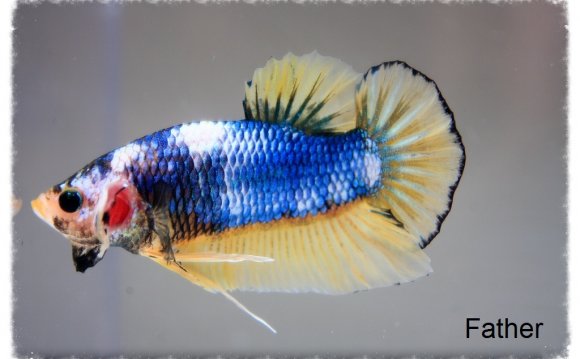
- 5-10 gallon aquarium without sand or gravel
- Soft fish net to fish out your breeder bettas when the time comes
- Thermometer - to monitor your tank's temperature
- 2 floating plastic plants or other hiding places- to provide protective hiding place for unready female and fry
- Aquarium Heater - should be fully submersible including cord. 25W would be adequate.
- 1 oz of brine shrimp eggs so you can hatch then and feed your fry as they grow
- Microworm culture - from breeder
- 1 Siphon hose to clean your fry tank and vacuum uneaten foods before they rot and cause bacterial outbreaks, which might kill fry. Note: when using siphon hose, use care not to vacuum out fry.
- Water conditioner
Methylene Blue (to protect torn fins from getting infected) spawning Maroxy (to prevent fungus from attacking eggs) Aquarium Salt (to prevent velvet disease) Treat with medicine to cure, not prevent. Bettas internal organs can be damaged by harsh medicine.
- Tank Dimensions: Height 14cm. Width 13cm. Length 22cm.
Smaller tanks technically could work but, you run the risk of disturbing the nest(empty or otherwise) when adding or removing the female. You may damage the nest either by touching it, causing ripples on the water, or by the wind caused by the movement of your hands(less likely but possible). A bigger tank also means a bigger nest. It should be noted however that the bigger tank has more fry inside. - Foilage: Plants with lots of leaves or branches.
This is so that the female can run and hide from the male. When she is ready she will not run and hide so no worries there. This will also allow the growth of foods that are small enough for the betta fries to consume. - Food: Microscopic food for babies and high protein foods for breeding parents.
For the adults, foods like bloodworms, tubifex worms, brine shrimp (frozen, dried, live). You should feed the parents rich foods 1-2 weeks before breeding (Part of conditioning). For fry infusoria, microworms and baby brine shrimp. - Aeration: A small corner or sponge filter, barely bubbling. These bettas need calm waters else the nest will break. Later on though, the fry will need to have VERY LIGHT aeration in their tank. This is to help in breaking the surface of the water.
- Temperature: Tropical water temperatures. 78-84F People in non tropical climates may need a heater. People who live in Singapore, Malaysia, Thailand probably won't need a heater. If you're not living in South-East Asia, you may also want to put a tight fitting cover on top of the tank to maintain the humidity and warmth that the betta fry need.
- Water: Treated tap water, add aquarium salt, and the correct dose of Maroxy.
Summary: Bare tank + plants + warm temperature + water + (later on)microfoods
Conditioning[edit]
For a start, you will get better results by getting the pair into a condition good for breeding. You can feed the adult pair high protein foods like Bloodworms, Tubifex worms, small insects, (Adult)Brine Shrimp (Frozen/Dried/Live), etc...
Tank Setup[edit]
Put plants in the tank in such a way that the fish can swim around it and chase each other without catching each other too easily. These plants will also later serve as a food source for the baby bettas who will eat microscopic organisms off of it. The growth of these organisms can be stimulated also by dropping a few drops of LiquiFry No. 1 in to the tank. The LiquiFry itself also consists of tiny food particles that the fry can eat. Baby brine shrimp(BBS) are also good.
Breeding[edit]
You know the female is ready for breeding when you can see just behind the ventral fin, a white egg tube sticking out. That is an ovipositor, through which she will release eggs. This does not mean that she is ready for mating with THAT male though. It just means she's ready for breeding.
The male is almost always ready for breeding. You may see him flaring and chasing after the female. This is normal. He most probably may have also already built his nest. If you are the cautious type and are waiting for the nest to be ready before you introduce the female, do so now.
The female, may occasionally destroy the male's nest if she feels it is unsatisfactory. If she does this, remove her and let the male rebuild the nest again. Reintroduce her after he has finished building his nest. If after reintroducing her again, she still destroys his nest, you may wish to get another female, or another male.
Mating[edit]
When the female has chosen a male she will maneuver her body so that her head is facing downwards. Depending on her colors you may also see vertical stripes on her body. The female will also occasionally chase the male.
After some more chasing the male will eventually capture the female and wrap his body around hers and fertilize her eggs.
He will recover quickly and catch the eggs and put them in his nest. The female will stay motionless for a while longer. She occasionally will help by putting the eggs in the nest. DO NOT be fooled - at times she may be eating them instead.









